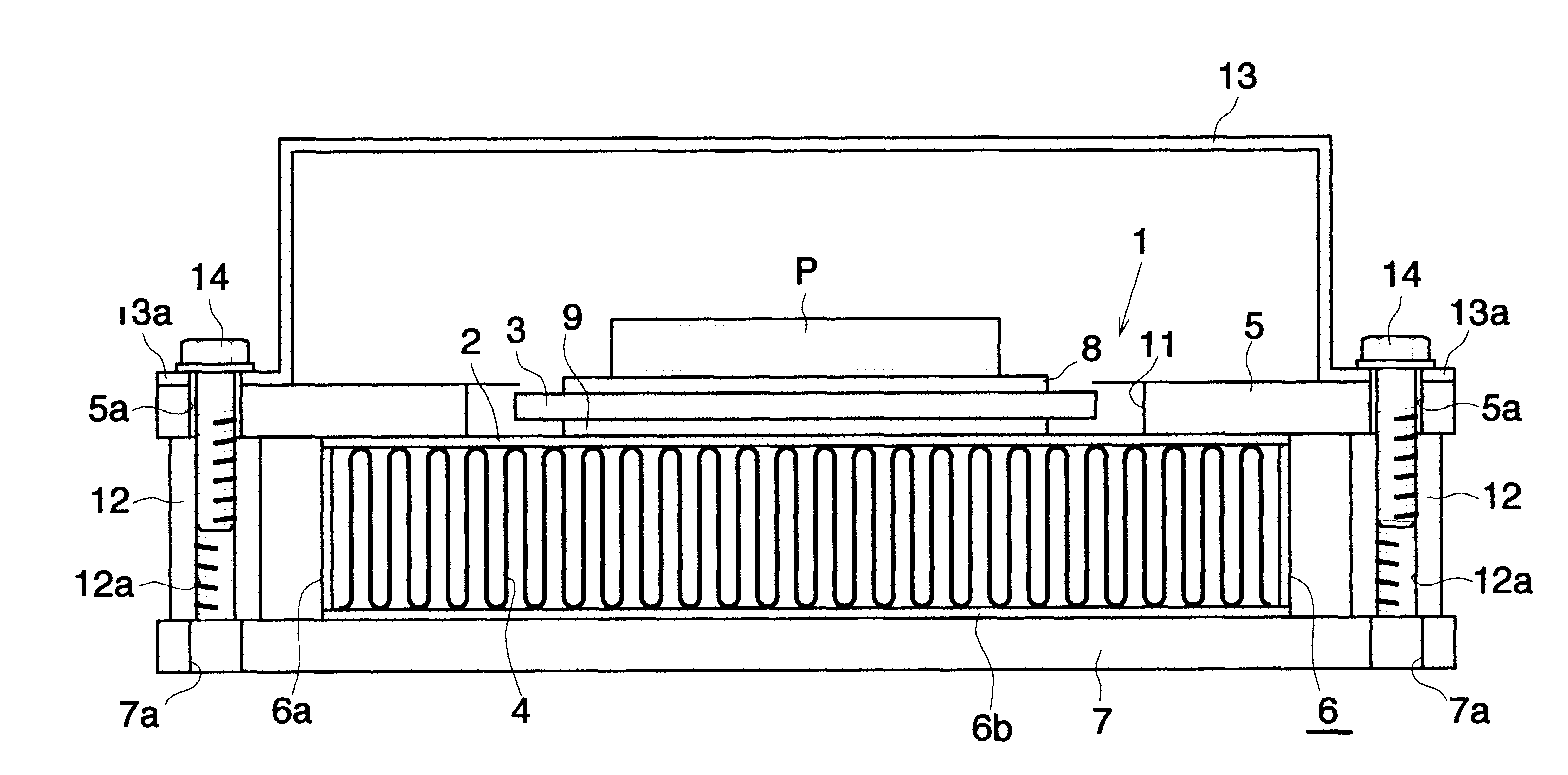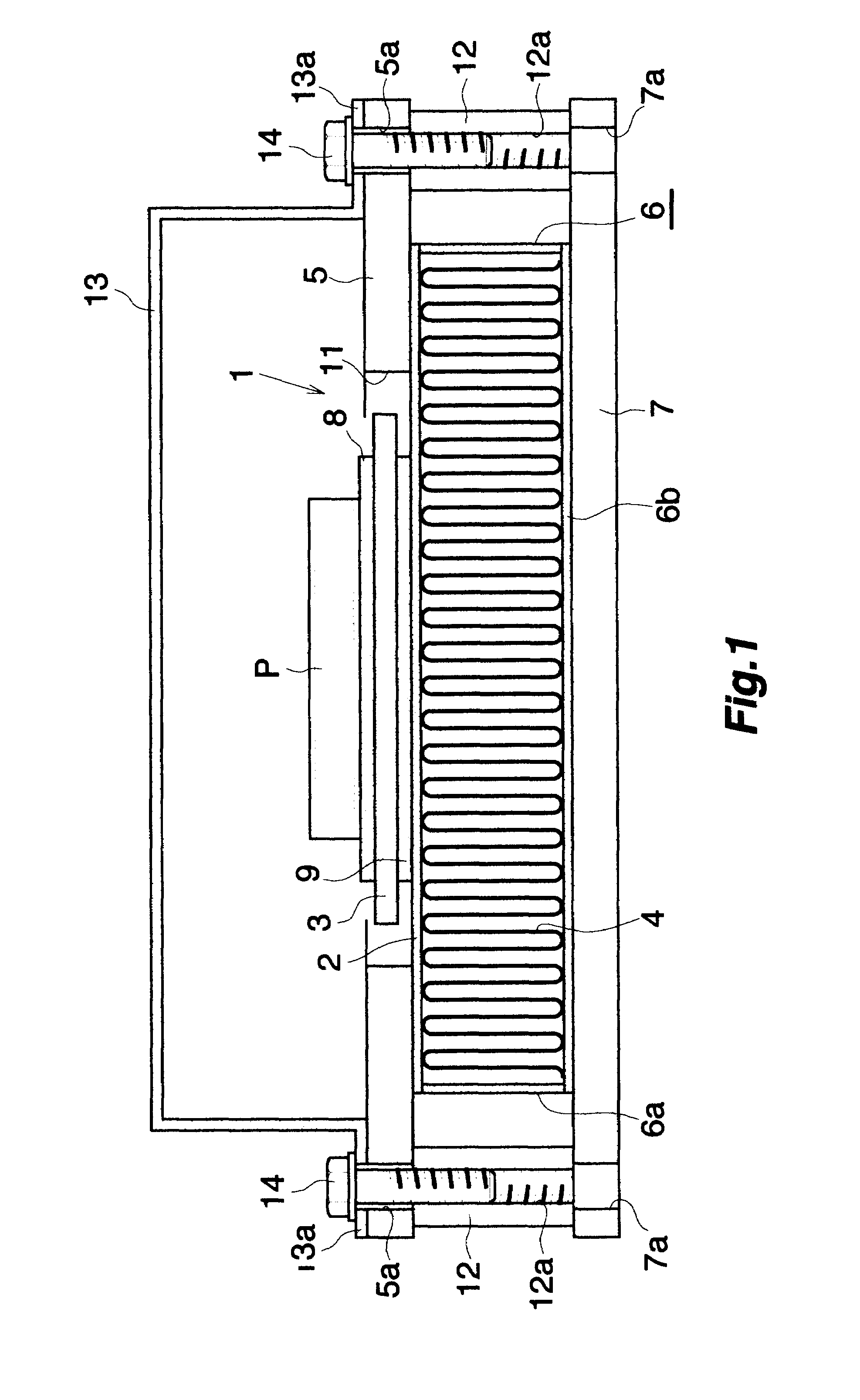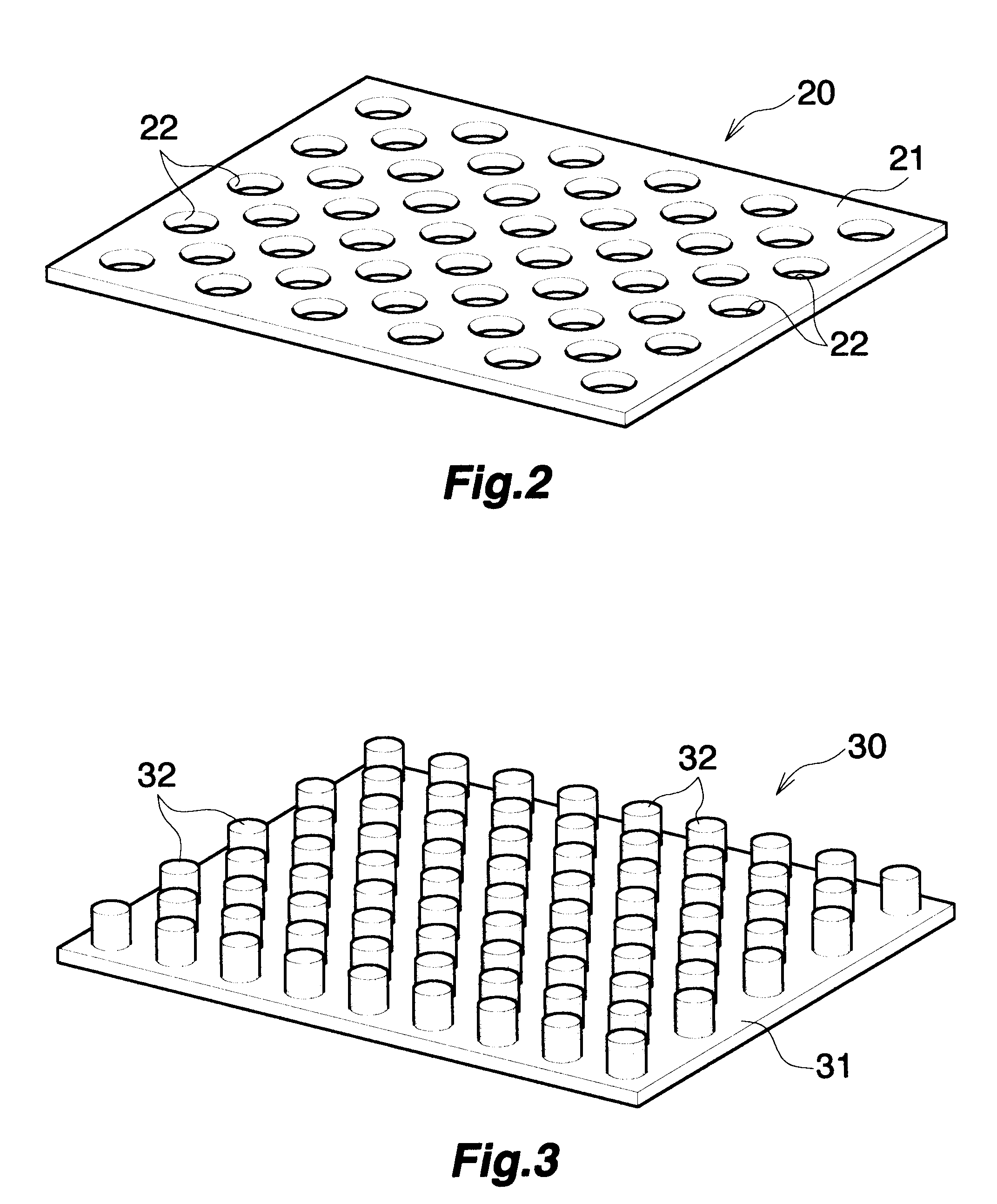[0027]According to the power module base of par. 1), the following advantageous effects are attained. In the case where the joining of the insulating substrate, the heat radiation substrate, the heat radiation fin, and the component attachment plate is performed by, for example,
brazing, the insulating substrate, the heat radiation substrate, and the component attachment plate thermally expand at the time of heating for
brazing, and are brazed together in a thermally expanded state. Subsequently, the insulating substrate, the heat radiation substrate, and the component attachment plate thermally contract after completion of the heating. Since the heat radiation substrate is formed of a high-thermal-conduction material such as aluminum and its
linear expansion coefficient is larger than that of the insulating substrate, the degree of
thermal expansion of the heat radiation substrate is greater than that of the insulating substrate, and, as a result, the degree of
thermal contraction of the heat radiation substrate is greater than that of the insulating substrate. Therefore, when the insulating substrate and the heat radiation substrate thermally contract as a result of being cooled to
room temperature after completion of brazing, the degree of contraction of the heat radiation substrate becomes larger than that of the insulating substrate, and the heat radiation substrate is pulled by the insulating substrate, so that deformation such as warpage arises in the heat radiation substrate. However, since the component attachment plate is thicker than the heat radiation substrate and is high in rigidity, the component attachment plate is not affected by the deformation of the heat radiation substrate, and the surface of the component attachment plate opposite the surface joined to the heat radiation substrate is maintained flat. Accordingly, various components can be accurately attached. For example, when a casing for covering a power device and the insulating substrate of the power module base is attached to the component attachment plate, no clearance is formed between the casing and the component attachment plate, and the interior of the casing can be maintained in a sealed condition. Further, an
electrical wiring frame and components necessary for the power module, such as electronic components, can be accurately attached.
[0028]In addition, unlike the power module base disclosed in
Patent Document 1, the thickness of the heat radiation substrate is not required to increase. Therefore, a heat conduction path from the power device to the heat radiation fin becomes relatively short, whereby a drop in heat radiation performance is suppressed.
[0029]According to the power module base of par. 2), heat generated from the power device mounted on the insulating substrate is conducted to the heat radiation fin via the insulating substrate and the heat radiation substrate, and is radiated from the heat radiation fin to a cooling liquid flowing within the cooling jacket. Accordingly, a relatively excellent heat radiation performance is attained.
[0030]In the case where the insulating substrate and the heat radiation substrate are brazed together, the heat radiation substrate and the heat radiation fin are brazed together, and the heat radiation substrate and the component attachment plate are brazed together as in the power module base of par. 3), the insulating substrate, the heat radiation substrate, and the component attachment plate thermally expand at the time of heating for brazing, and are brazed together in a thermally expanded state. Subsequently, the insulating substrate, the heat radiation substrate, and the component attachment plate thermally contract after completion of the heating. Since the heat radiation substrate is formed of a high-thermal-conduction material such as aluminum and its
linear expansion coefficient is larger than that of the insulating substrate, the degree of
thermal expansion of the heat radiation substrate is greater than that of the insulating substrate, and, as a result, the degree of
thermal contraction of the heat radiation substrate is greater than that of the insulating substrate. Therefore, when the insulating substrate and the heat radiation substrate thermally contract as a result of being cooled to
room temperature after completion of brazing, the degree of contraction of the heat radiation substrate becomes larger than that of the insulating substrate, and the heat radiation substrate is pulled by the insulating substrate, so that deformation such as warpage arises in the heat radiation substrate. However, since the component attachment plate is thicker than the heat radiation substrate and is high in rigidity, the component attachment plate is not affected by the deformation of the heat radiation substrate, and the surface of the component attachment plate opposite the surface joined to the heat radiation substrate is maintained flat. Accordingly, various components can be accurately attached. For example, when a casing for covering the power device and the insulating substrate of the power module base is attached to the component attachment plate, no clearance is formed between the casing and the component attachment plate, and the interior of the casing can be maintained in a sealed condition. Further, an
electrical wiring frame and components necessary for the power module, such as electronic components, can be accurately attached.
[0031]According to the power module base of par. 4), a housing for accommodating the entire power module, an electrical wiring frame, and various components necessary for the power module can be attached by making use of the second component attachment plate. In addition, in the case where these components generate heat, these heat generating components can be cooled by a cooling liquid flowing through the cooling jacket.
[0032]According to the power module base of par. 6),
heat conducting from the power device mounted on the insulating substrate is conducted to the heat radiation substrate while being dispersed in the direction of the plane of the
heat transfer layer. Therefore, the heat conduction to the heat radiation substrate and thus to the heat radiation fin is improved.
 Login to View More
Login to View More  Login to View More
Login to View More 


